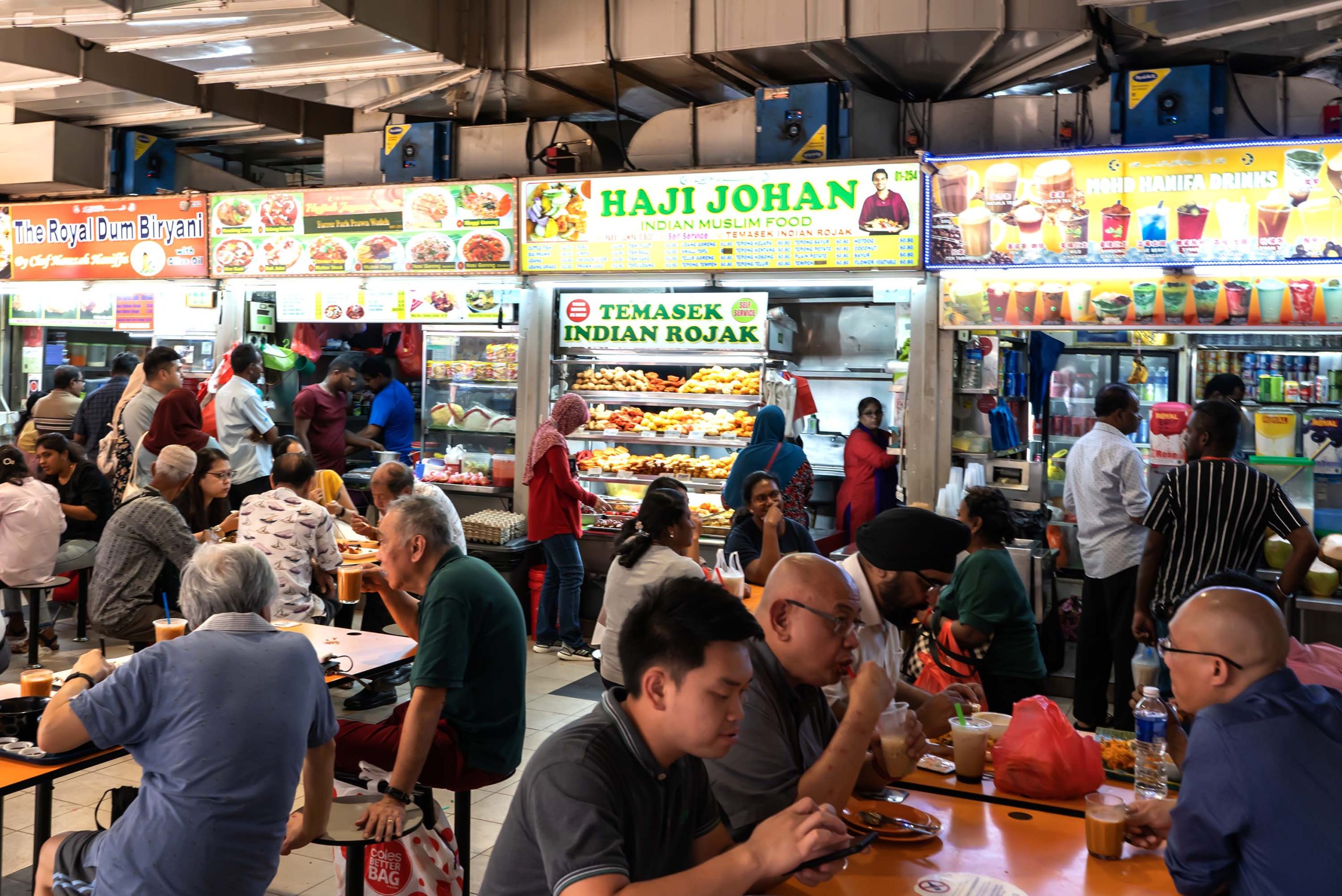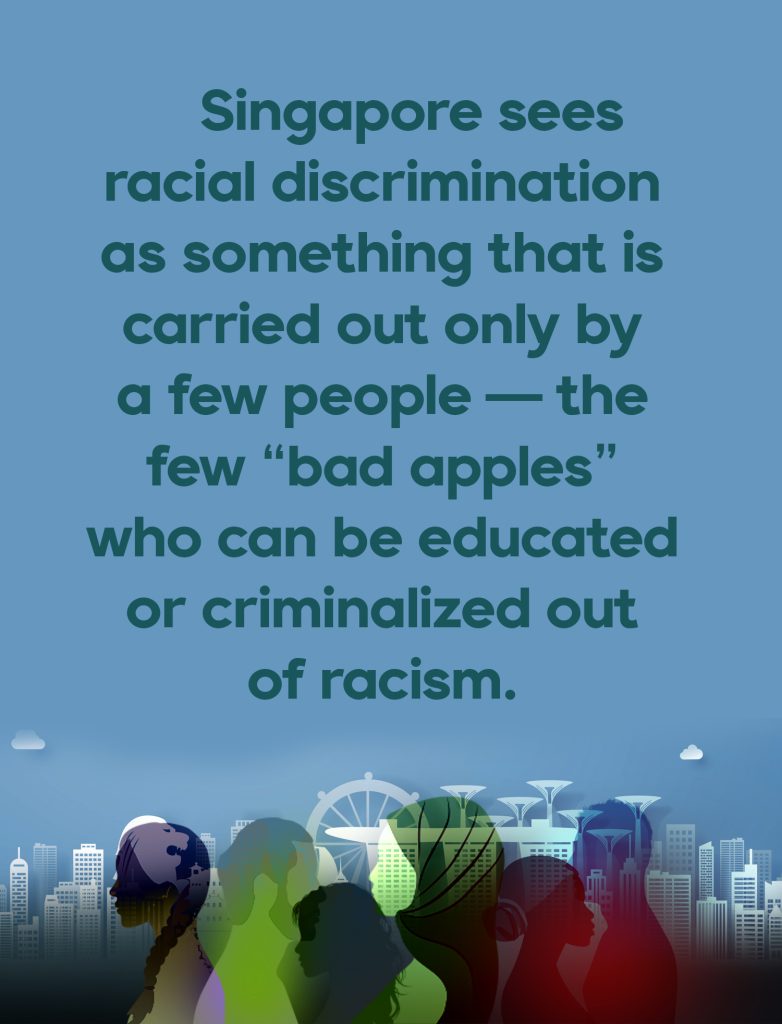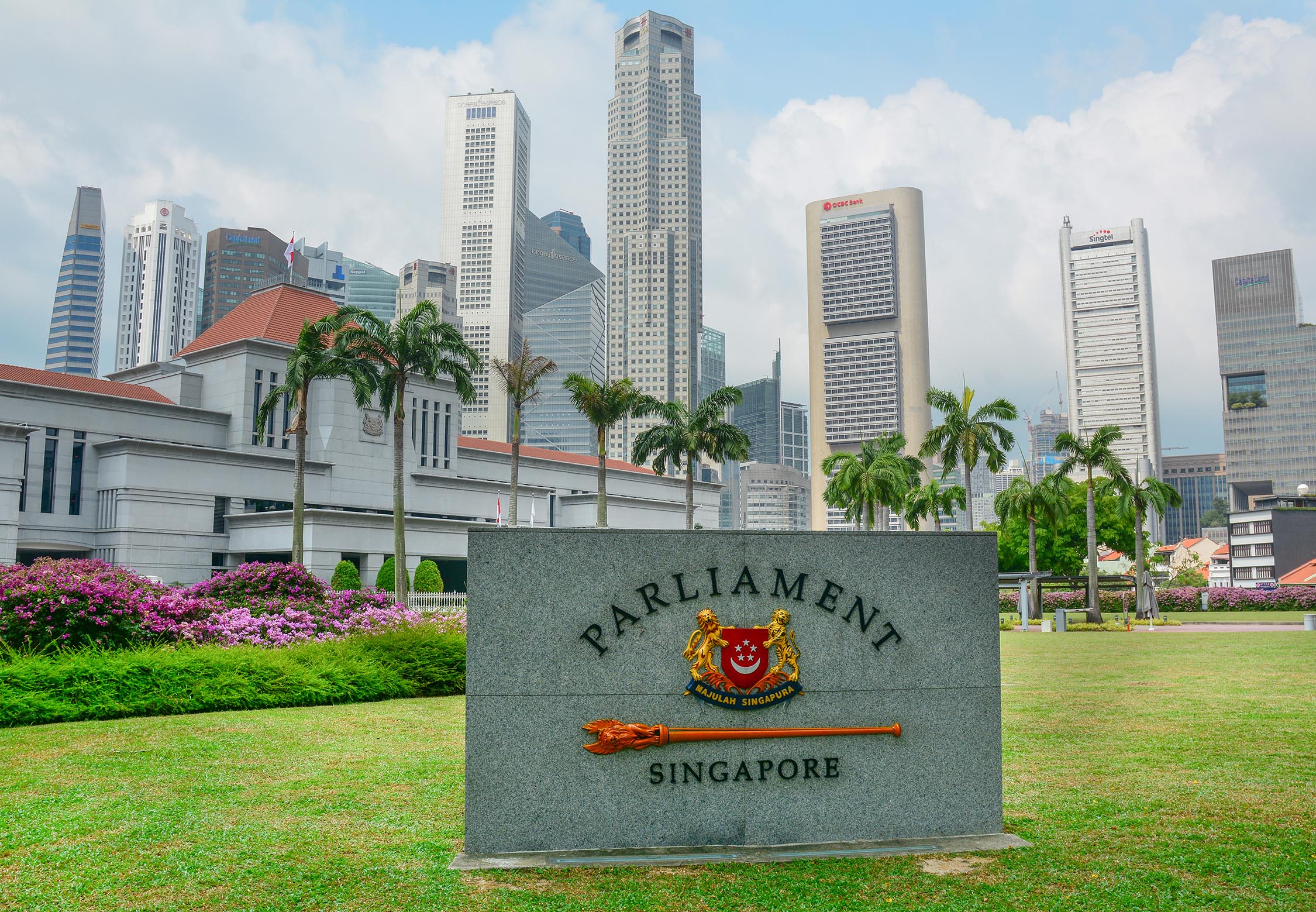In mid-November 2021, Singapore came in front of the United Nation’s Committee on the Elimination of Racial Discrimination (CERD). The CERD is the independent watchdog formed after the International Convention on the Elimination of all Forms of Racial Discrimination was ratified in 1969. Countries that are party to the convention must give biannual updates to the CERD on how these rights are being protected and implemented, and part of the CERD’s job is to give recommendations or raise concerns based on these reports.
Singapore was supposed to have presented its report in 2020, but this was pushed to the next year due to the pandemic. The delegation from Singapore was led by Mohamad Maliki bin Osman, Minister in the Prime Minister’s Office, whose opening speech reiterated Singapore’s commitments to multi-racialism and meritocracy, stating, “Racial equality (has been) a cornerstone of Singapore … since independence.”
There are three main ethnic groups in Singapore — Chinese, Malay, and Indian — with the ethnic Chinese making up nearly 75 percent of the city-state’s 5.68 million people. Singapore has long been touted as a multiracial wonder, a state that practices strict meritocracy, thereby ensuring that the racial inequalities plaguing other countries do not manifest there. The ruling government, the People’s Action Party, gets much of its domestic and international legitimacy by pointing to its policies of multiracialism as evidence of its success. In the schools’ social studies textbooks, Singapore is contrasted with places such as Sri Lanka and Northern Ireland, and is cast as superior because “the message is … that without racial and religious harmony, it would spell disaster (in Singapore) as in the cases of Sri Lanka and Northern Ireland.”

Singapore has been touted as “multiracial wonder” that practices strict meritocracy. However, that is not the case on the ground.
Thus, the CERD’s questions must have come as a bit off a shock to the state’s representatives, who were confronted on Singapore’s treatment of minorities, the justice system, and migrant workers — questions that, when asked by Singaporeans, bring a host of state repression.
The Singapore delegation started the session by stating that “all Singaporeans can progress and be rewarded (for hard work) … as there is no disadvantage of race.” Yet, most scholarships on race in Singapore disputes this. Academic Lily Zubaidah Rahim’s research points to persistent racism toward the country’s Malay-Muslim population, despite the Singapore constitution’s stated claim of their indigenous status. Michael Barr, associate professor in international relations at Australia’s University of Queensland, has written on how the myth of meritocracy in Singapore is used to enshrine Chinese domination in the country. Other scholars note that minorities are hired less, paid less, and discriminated against in the workplace, and that income inequality in Singapore has little to do with education and more to do with discrimination, as minorities with the same qualifications as ethnic Chinese are often paid less for the same job.
Just a case of “a few bad apples?”
Scholarship aside, anecdotal evidence abounds on how much the country extends privileges to and prefers ethnic Chinese to its minorities. There are ample reports of discrimination in schools, employment, the housing market, even on the streets where minorities are the target of racist violence from Chinese Singaporeans.
So why does the Singapore government continue to deny that racism exists in Singapore, despite the plethora of evidence of both systemic and on-the-ground, daily racism? Perhaps the question asked by CERD member Stamatia Stavrinaki goes to the crux of the answer: What is Singapore’s understanding of racial discrimination?

Singapore sees racial discrimination as something that is carried out only by a few people — the few “bad apples” who can be educated or criminalized out of racism. With this assertion, it moves the focus away from structural racism to microaggressions, i.e., the state is not responsible for the actions and words of a racist few. It turns structural racism into a personal failure, which allows the state to maintain that as a country, there is no systemic racism.
This also allows Singapore to get away with racist policies while at the same time trumpeting how un-racist it is. Because it says that there is no structural racism in Singapore, the state, therefore, has nothing of the sort to address and has no need to institute policies of redress or affirmative action.
In a 2021 address, Prime Minister Lee Hsien Loong said that there is no “Chinese privilege” in Singapore. Singapore’s Law Minister K. Shanmugam has even defended racial chauvinism, stating that “racial preferences” do not constitute racism even though racial preferences are seen by scholars as explicitly racist.
In countries like the United States, people regularly sue companies, individuals, and the state for discrimination. But because are no laws that explicitly address racial discrimination in Singapore, the justice system currently holds no such recourse for Singaporean minorities. It was only in August 2021 that the state, after much discussion and pushback about racism in Singapore, publicly stated that it will pass anti-racism laws.
In its session with the Singapore delegation, the CERD also asked about the Presidential Council of Minority Rights (PCMR). The PCMR is meant to look at bills before they become law. The council is meant to raise objections if the bill is discriminatory against racial or religious minorities.
In its 51-year history, the PCMR has never once objected to any policy or law brought by the People’s Action Party. This includes policies on quotas in the housing system, employment, and the practice of minority religions (namely Hinduism and Islam), all of which have put non-Chinese Singaporeans at a serious disadvantage. Thus, the creation of the council seems to be a toothless exercise, existing only in name in order for the government to point to it whenever it is criticized, but never to actually work for the betterment of racial minorities in the country.
The CERD was also concerned with another area: the treatment of migrant workers. This has been in the spotlight of late after the country’s abysmal treatment of its foreign workers led to a deadly coronavirus wave. The rapporteur from the CERD himself noted that when it comes to domestic workers, Filipino workers are paid the most while South Asians and Burmese people are paid the least. This seems to suggest that compensation is often based on race and ethnicity, which means that income inequality based on race holds true for both Singaporeans and migrant workers. That is how strongly racial disparity and inequality operates in Singapore.
It is important to note that these workers are usually the underclass of nearby countries. These are not expatriates with high salaries. Instead, they live in horrendous circumstances and are exploited in a country that still has no minimum wage.
The smiley-face man
In a follow-up question, activist Jolovan Wham was named by CERD as being singled out by the state explicitly for his work defending the rights of migrant workers. Wham has been the target of the Singapore government for a few years now because of his work revealing the exploitation of migrant workers and violations of their rights in Singapore. He has been charged a number of times, including one for carrying a hand-drawn smiley face on a piece of cardboard, and another for refusing to sign a police statement that he could not be sure would not be doctored if he signed it.
CERD’s Bakari Sidiki Diaby asked what kind of civil-society space Singapore has for those working for racial equality like Wham. He did not get a direct response, although the delegation did answer some of the other queries during the second day of questioning.

The Parliament House of Singapore is where the toothless Presidential Council for Minority Rights meets to study legislation and ensure that laws passed are not discriminatory.
The main thread of the Singapore delegation’s replies to CERD’s questions was that the existing laws are enough to adequately address the problems the UN body raised. There was also an insinuation that the public does not need to know details, such as the “ethnic data of death row inmates … (because) equality before the law is ensured.” There has been little evidence of this, but the Singapore delegation seems to think that we are supposed to simply take its word that the law is equal and trust a government that operates in secrecy — the kind of secrecy that can ensure that corruption within its ranks is not made public until the state is ready. This is the kind of secrecy that is designed to protect the state at all times.
Singapore has long gotten away with parroting its meritocracy while manufacturing a Chinese supremacist state. Writers like me have been threatened with sedition for pointing out racial inequality in the country because what the Singapore government cares about is the facade of equality, not the reality of it. Thus, it seeks to silence anyone who offers an alternative narrative to the fancy picture it likes to paint of itself.
The CERD’s questions and challenges to the Singapore delegation are a form of validation for activists such as myself in the long fight against racism in Singapore. While the Singapore government can threaten to sue us or throw us in jail, it cannot do the same with the CERD. Instead, it is forced to publicly reckon with its failures, which it will never do domestically.
But on top of organizations such as the CERD, there needs to be more international scrutiny on Singapore that does not take its good press at face value. International shame and censure have a greater chance of forcing the Singapore state into concessions because minorities in Singapore are disenfranchised to the point where they lack any power to force a change. It is the international community that can make a real difference by being in solidarity with Singaporean minorities, elevating our voices, and holding the Singapore state accountable for its actions. ●
Sangeetha Thanapal is a Singaporean social critic and activist who is currently based in Australia.



















